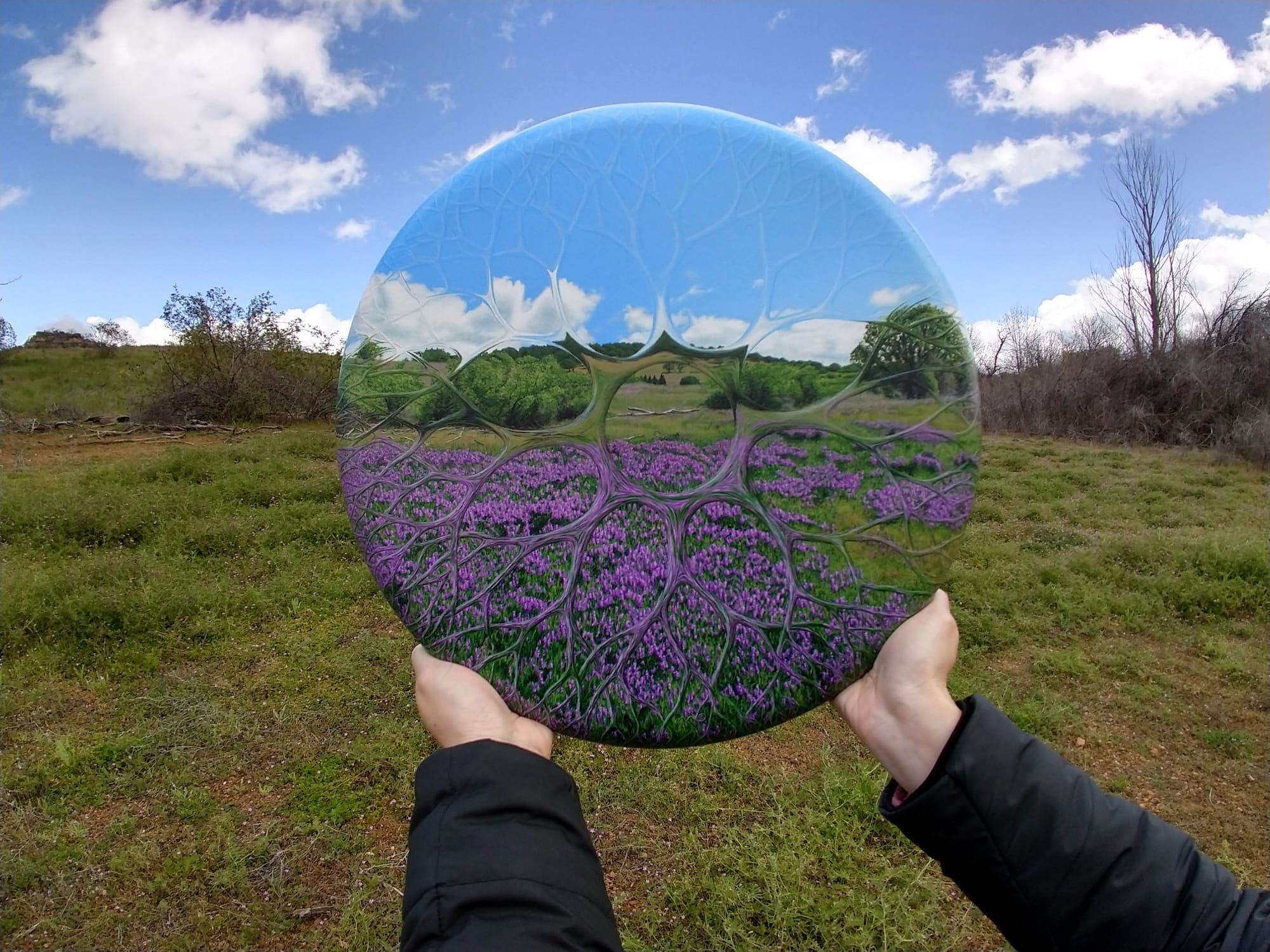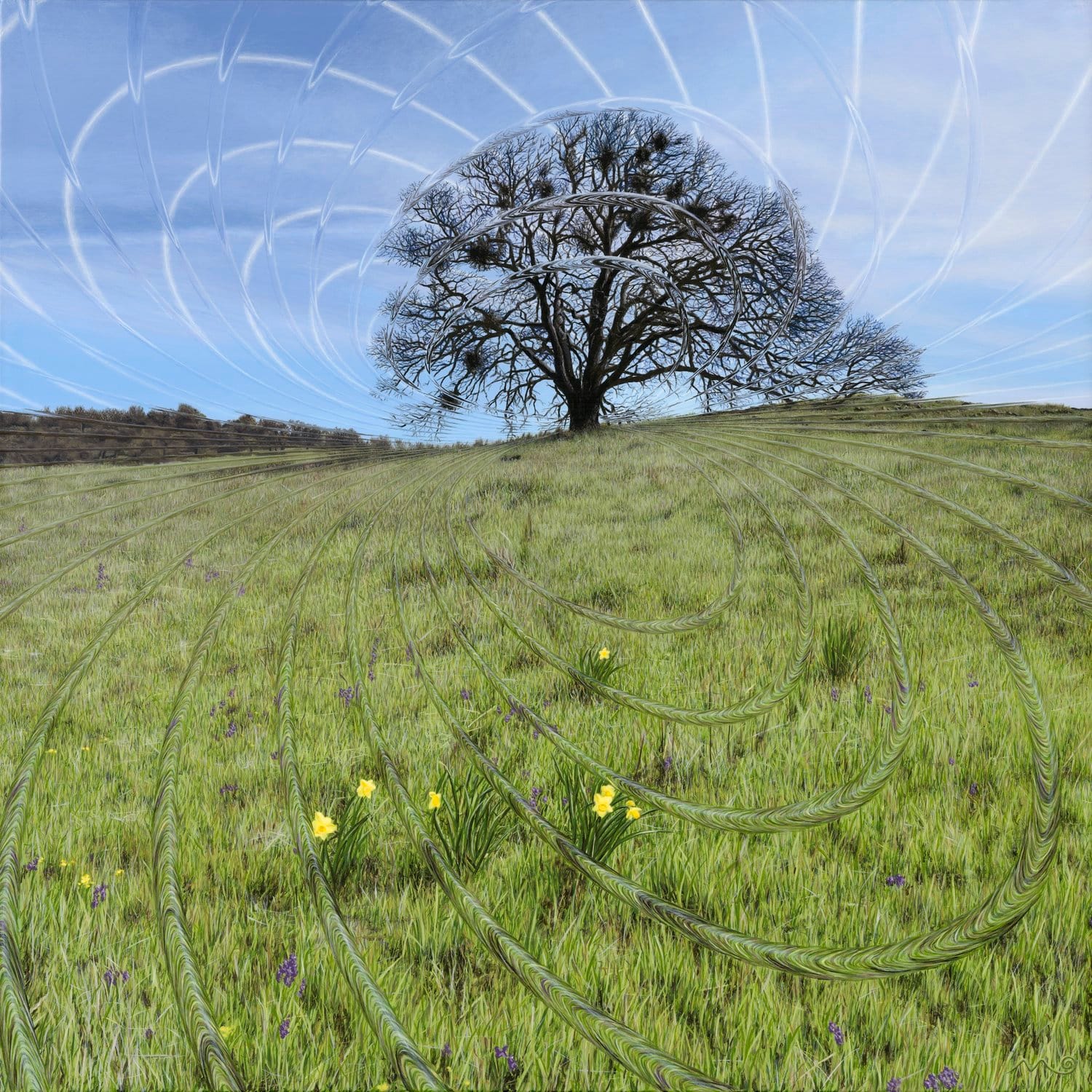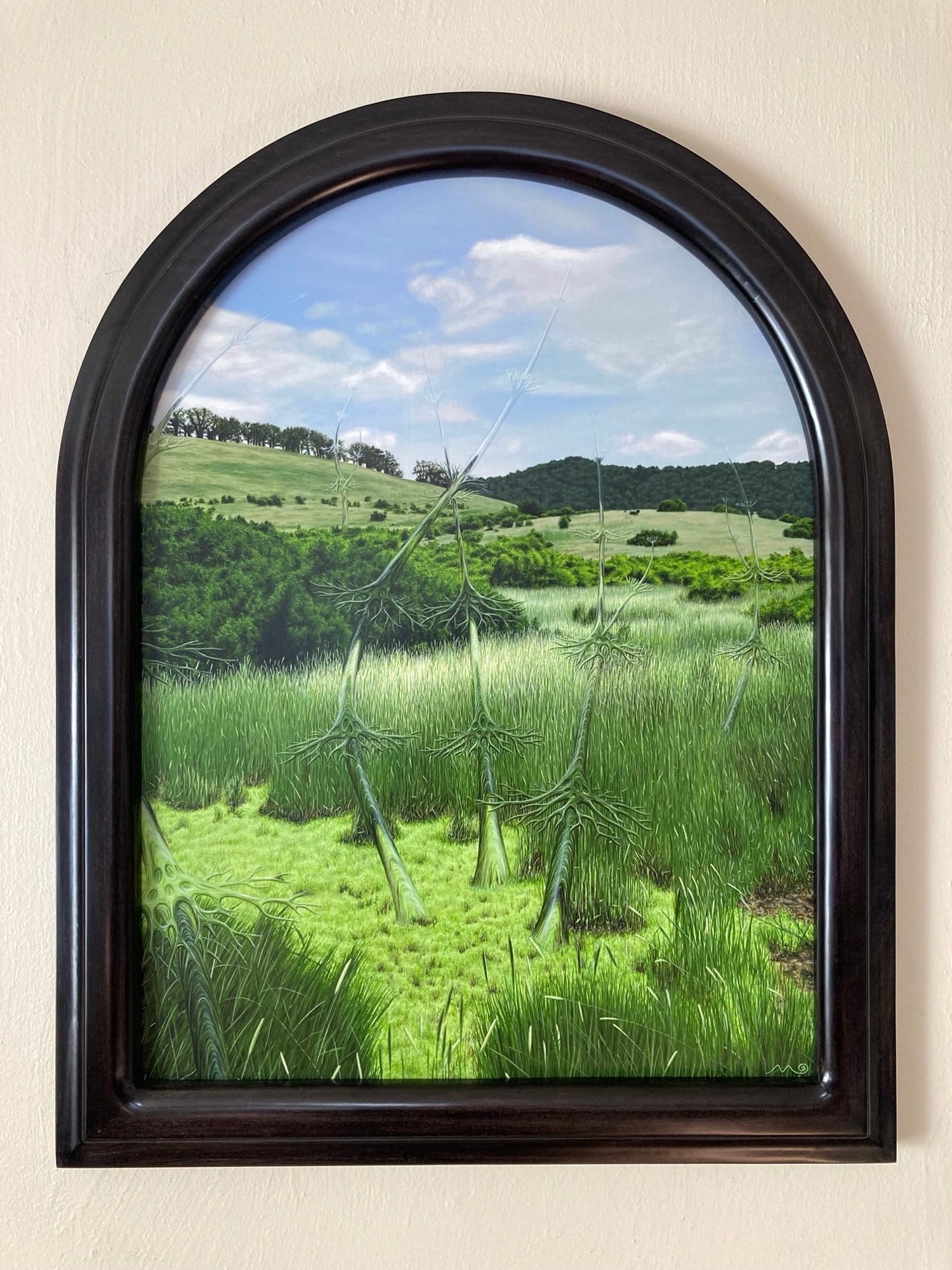Humankind has been transforming the surface of the planet in such an entrenched way that at times their impact seems invisible. One example are the grasslands in Scotland, where despite looking like a natural environment, these vast fields were once forests which were cut down and maintained by farming. One landscape painter, Micah Ofstedahl, is now creating similar picturesque landscapes with the addition of translucent apparitions to help to visualize the hidden impacts that humanity has made to the world’s environments, whether for better or for worse. This is why Ofstedahl’s paintings are aligned with the United Nations Sustainable Development Goals of Life on Land.

The glass-like landscape distortions in his paintings, with their sharp edges and ornate snow-flake like designs, look like they may have come straight out of a science-fiction movie. To create them, Ofstedahl looks towards the forms and structures of microorganisms, particularly the aquatic Protozoa drawings by Ernst Haeckel. The presence of aquatic Protozoan communities are often used as a strong indicator of water quality, with their disappearance indicating high levels of water pollution. One study on the Nile river showed that the disappearance of one species of Protozoa, the Acanthocystis turfacea, confirms that municipal drains connected with the Nila have indeed polluted it.

Considering those scientific findings, Ofstedahl’s paintings can be read as a reminder to check how human activity has affected nature down to its microscopic levels. Ofstedahl’s sheer effigies highlight the presence of microorganisms in the environment that would otherwise be invisible to the naked eye. As studies have confirmed, these beings may already be suffering from human interference even if the landscape they inhabits appear fine, or even as Ofstedahl paints, picturesque.

Hence, Micah Ofstedahl’s distorted landscape paintings reveal the hidden impacts of humanity on seemingly untouched natural environments. By incorporating translucent, science-fiction-like distortions inspired by microorganisms, Ofstedahl visualizes the unseen consequences of human activity, such as deforestation and water pollution. His work highlights the fragility of ecosystems and emphasizes the need to protect and consider microscopic life forms when enforcing human infrastructure development. Through his intricate and thought-provoking pieces, Ofstedahl invites viewers to reflect on humanity’s dire yet often invisible influence on the planet’s landscapes.
Find out more about distorted landscape paintings and other pieces by Micah Ofstedahl on his website www.micahofstedahl.com or Instagram @micahofstedahl.
